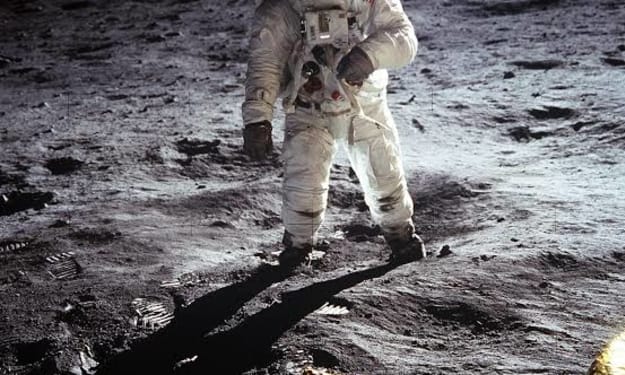
Once upon a time, in a world consumed by apathy and disregard, there existed a forgotten land named Verdantia. It was a land of lush forests, vibrant wildlife, and cascading waterfalls. But now, its beauty had faded, and its once-vibrant colors had turned into shades of despair.
Amidst the desolation, a solitary tree stood tall, its branches reaching out like desperate arms, begging for mercy. It was the last of its kind, the guardian of life, and it wept silently for its fallen brethren. For years, it had witnessed the relentless destruction of its home, as humans exploited nature for their own selfish gains.
With each passing day, the tree watched as forests were cleared, rivers ran dry, and the skies grew darker with pollutants. It felt the weight of the changing climate, as temperatures soared, storms raged, and delicate ecosystems collapsed like dominoes. It knew the time was running out, and it yearned for someone to listen to its plea.
One fateful day, a young girl named Lily wandered into the dying forest. As she walked through the barren landscape, her heart sank, mirroring the sadness in the tree's eyes. Lily had always felt a deep connection with nature, and witnessing its demise filled her with an indescribable ache. Determined to make a difference, she decided to become the voice of the voiceless, the advocate for a planet in peril.
Lily embarked on a journey, traveling far and wide to share her story. She spoke passionately about the urgent need to act, to change the trajectory of the world before it was too late. Through her words, she painted a vivid picture of a world on the brink, of a future plagued by catastrophic consequences.
In bustling cities, Lily confronted the harsh reality of human indifference. She pleaded with people to open their hearts and minds, to see beyond their immediate desires and recognize the interconnectedness of all life. She spoke of the delicate balance that sustained them, warning that the destruction of nature would ultimately lead to their own demise.
But her pleas often fell on deaf ears, drowned out by the cacophony of distractions and short-term interests. Lily felt her resolve waver, overwhelmed by the enormity of the task at hand. Doubt and despair clouded her spirit, threatening to extinguish the fire within her.
However, just as hope began to fade, a spark ignited in the most unexpected of places. A group of young activists, inspired by Lily's unwavering passion, joined forces to create a movement for change. They formed an unbreakable bond, fueled by a shared determination to heal the wounds inflicted upon the planet.
Together, they rallied communities, staged protests, and organized tree-planting campaigns. They harnessed the power of social media, spreading their message far and wide, transcending borders and generations. Their unwavering dedication brought forth a renewed sense of urgency, igniting the flame of environmental consciousness within the hearts of millions.
As the movement grew stronger, governments were forced to listen. Policies were enacted to curb greenhouse gas emissions, promote renewable energy, and protect vulnerable ecosystems. Corporations were held accountable for their actions, and sustainable practices became the new standard.
Slowly but surely, the world began to change. The last tree in Verdantia, sensing a glimmer of hope, shed tears of joy. It witnessed new shoots emerging from the ground, as forests started to regenerate, and rivers flowed freely once more. The skies cleared, and the air became pure and revitalized.
Lily stood beneath the rejuvenated tree, its branches now stretching out with renewed vigor. She marveled at the resilience of nature and the power of collective action.
Individual and governmental responsibility are two essential pillars in addressing climate change. Both must work hand in hand, recognizing their unique roles and taking action to mitigate the impacts of this global crisis.
Individual responsibility begins with understanding the personal impact of our actions on the environment. Each individual can contribute to climate change mitigation through simple yet impactful lifestyle changes. This includes reducing energy consumption by using energy-efficient appliances, turning off lights when not in use, and conserving water. By embracing sustainable transportation options like cycling, walking, or using public transport, individuals can also reduce carbon emissions.
Additionally, making conscious choices in daily life, such as adopting a plant-based diet or reducing meat consumption, can significantly reduce the carbon footprint associated with food production. Recycling, minimizing waste, and embracing reusable products are other ways individuals can contribute to environmental conservation.
Moreover, individuals can use their voices and consumer power to drive change. By supporting businesses that prioritize sustainability, individuals can incentivize industries to adopt eco-friendly practices. Influencing friends, family, and communities to adopt sustainable habits and raise awareness about climate change is another crucial aspect of individual responsibility.
On the other hand, governmental responsibility is vital in addressing climate change at a systemic level. Governments have the power to implement policies, regulations, and incentives that promote sustainable practices across industries and sectors. They can invest in renewable energy infrastructure, support research and development of clean technologies, and enforce environmental standards to limit pollution.
Governmental responsibility also extends to international cooperation. Collaboration between nations is essential to address climate change comprehensively. This includes commitments to reduce greenhouse gas emissions, sharing technology and knowledge, and providing support to developing countries to mitigate and adapt to climate change impacts.
Furthermore, governments can allocate resources towards climate change adaptation measures, such as building resilient infrastructure, supporting climate-resilient agriculture, and investing in education and awareness programs. They can foster sustainable land management practices and protect natural habitats to conserve biodiversity.
Importantly, governments can foster a transition to a low-carbon economy by providing incentives for businesses and individuals to adopt sustainable practices. This can include tax incentives for renewable energy projects, subsidies for green initiatives, and carbon pricing mechanisms that internalize the environmental cost of carbon emissions.
Ultimately, the responsibility to address climate change lies both with individuals and governments. While individual actions cumulatively create a significant impact, government policies and regulations provide the framework for systemic change. By working together, individuals and governments can accelerate the transition to a sustainable future, mitigating the worst effects of climate change and safeguarding the planet for future generations.
About the Creator
Ragoo
Hi, I’m a retired truck driver that has traveled most of the world. Most would call me a jack of all trades, I second that notion. I spend my time living, loving and embracing all those that I have the pleasure of meeting daily.






Comments
There are no comments for this story
Be the first to respond and start the conversation.